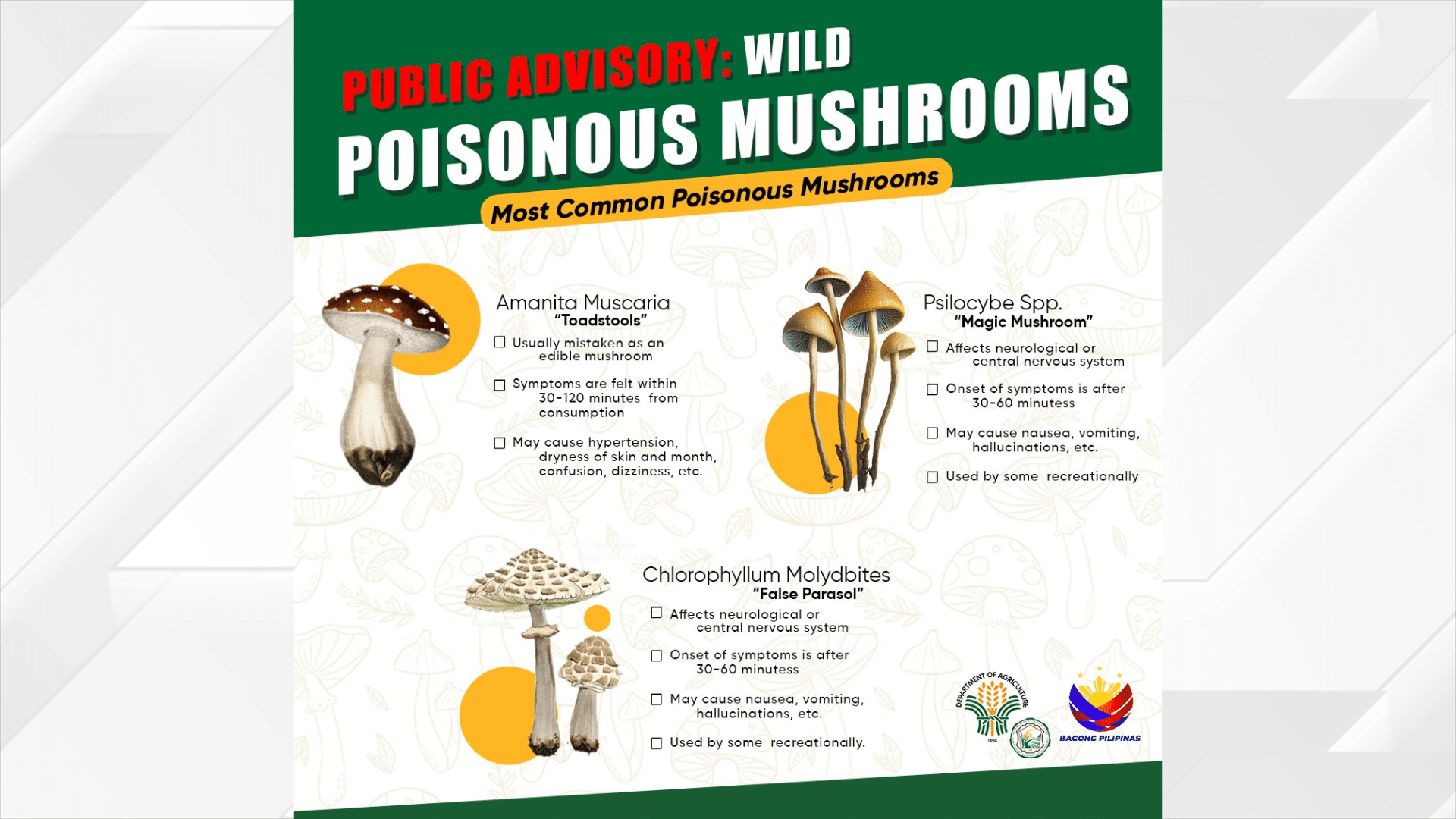
DOH WARNING. The Department of Health in Cordillera reminded anew the public to continue to avoid eating wild mushrooms especially when unsure whether they are poisonous or not. The Department recorded 11 cases of poisoning, involving 34 people from four municipalities in Benguet and five in Mountain Province from May 21 to June 27, 2024. | PHOTO: DA-CAR
BAGUIO CITY — The Department of Health (DOH) on Thursday reiterated its call against eating wild mushrooms after 24 people in Mountain Province and Benguet were hospitalized for unknowingly consuming poisonous mushrooms.
“It is better to avoid picking wild mushrooms especially if we are not sure if they are not poisonous,” Karen Lonogan, Development Management Officer IV and chief of the Regional Epidemiology and Services Unit of the Department of Health-Cordillera Administrative Region (DOH-CAR), told the Philippine News Agency.
Lonogan said 11 cases of poisoning involving 34 people from four municipalities in Benguet and five in Mountain Province were recorded from May 21 to June 27.
Of the 34 victims, 25 were admitted to different hospitals while others were sent home after receiving immediate treatment.
“Fortunately, there was no casualty because the victims were immediately brought to medical facilities where they received immediate treatment),” Lonogan said.
Earlier, the DOH and the Department of Agriculture (DA) Cordillera offices cautioned the public against harvesting wild mushrooms due to records of food poisoning.
Both agencies urged the public to buy directly from those who culture mushrooms or from shops selling cultured ones.
Mushrooms abound in fields and forests during the rainy season.
Symptoms
The DOH-CAR in its earlier public advisory said mushrooms that are not edible contain toxins that target the gastrointestinal system and nervous system with symptoms ranging from allergic reactions to abdominal pains, nausea, diarrhea, vomiting, hallucinations, and behavioral changes.
The symptoms occur 30 to 60 minutes after eating the magic mushrooms, while the toadstool mushroom will have symptoms within 30 to 120 minutes.
The DOH said the severity of the symptoms may depend on the species, toxins, and the amount ingested, thus the treatment varies on the symptoms.
“Not all poisonous species are brightly colored. Most if not all parts of the poisonous mushrooms are toxic. Poisonous mushrooms may grow on land or wood, some poisonous mushrooms have toxins that can be tolerated by certain animals or insects. Boiling, drying, salting, or removing certain parts of a poisonous mushroom will not detoxify it and not all mushrooms smell or taste horrible,” the DOH advisory said. (PNA)